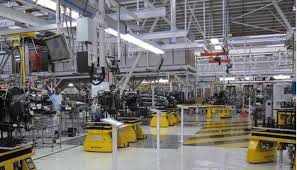Investments in Nigeria’s manufacturing sector plummeted by 35.3% in 2024, falling to N658.81 billion from N1.018 trillion in 2023. This sharp decline is largely attributed to the rising cost of finance, particularly due to increased interest rates. According to the Manufacturers Association of Nigeria (MAN) Economic Review for the second half of 2024, there was a modest recovery in the second half of the year, with investments up by 19.4% compared to the first half.
The decline in real manufacturing investment was a reflection of economic uncertainty and slower expansion plans. Total investment, in nominal terms, dropped by 11.3% to N2.85 trillion, with sectors such as Land & Buildings and Furniture & Equipment seeing the largest decreases.
The rising cost of finance, driven by higher commercial lending rates, has been a significant factor. The interest rates for loans to manufacturers surged from 28.06% in 2023 to 35.5% in 2024, a consequence of the Central Bank of Nigeria’s decision to raise the Monetary Policy Rate (MPR) to 27.5%. This resulted in N1.3 trillion in finance costs for manufacturers, severely limiting their ability to invest and expand.
Despite these challenges, the manufacturing sector saw a slight increase in real output by 1.7% to N7.78 trillion, fueled by growth in industries such as Motor Vehicle & Miscellaneous Assembly, Non-Metallic Mineral Products, and Electrical & Electronics. Nominal manufacturing output rose by 34.9% to N33.43 trillion, largely due to inflation and rising domestic prices.
The Director General of MAN, Segun Ajayi-Kadir, commented that the sector faced significant challenges in 2024, including macroeconomic instability, high inflation, and policy disruptions. The real GDP growth was weak, and inflation surged to 34.8%, further hurting purchasing power and increasing operational costs. The aggressive tightening of monetary policy also contributed to the high borrowing costs, which hampered the ability of manufacturers to expand.
Looking ahead, Ajayi-Kadir emphasized the importance of stabilizing macroeconomic conditions, improving energy supply, and providing access to affordable financing to ensure sustained growth and enhanced productivity in the manufacturing sector.

